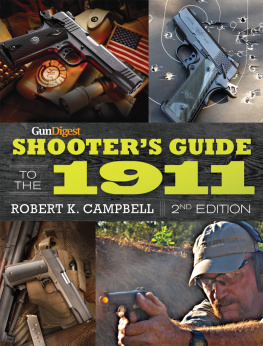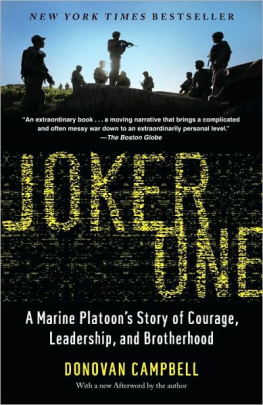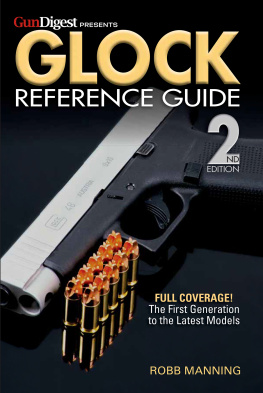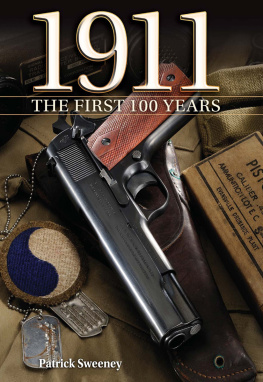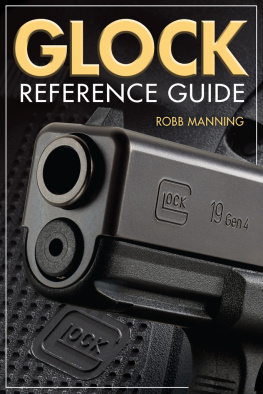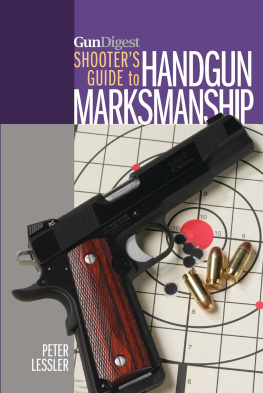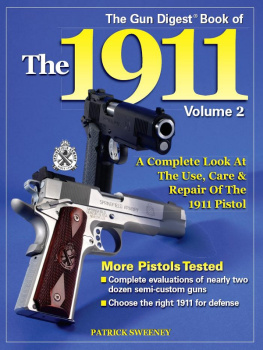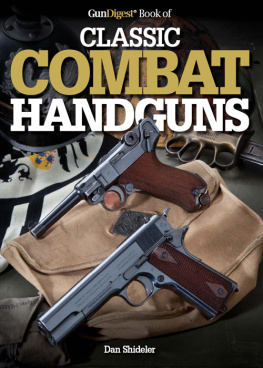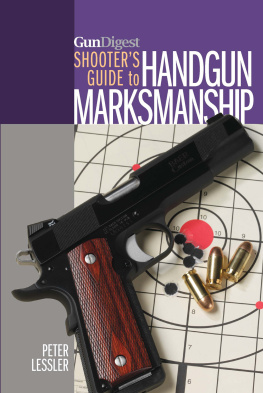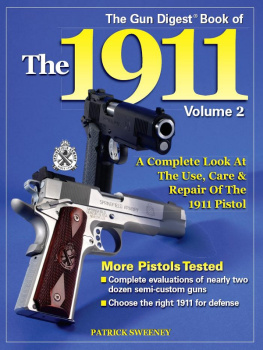By Robert K. Campbell
Thank you for purchasing this Gun Digest eBook.
Sign up for our newsletter and receive special offers, access to free content, and information on the latest new releases and must-have firearms resources! Plus, receive a coupon code to use on your first purchase from GunDigestStore.com for signing up.
or visit us online to sign up at
http://gundigest.com/ebook-promo
DEDICATION
I am blessed by God beyond measure to live for and with what I love most - Joyce and the children and grandchildren.
To the diligent and hard work of Robert Alan Campbell in loading thousands of rounds of ammunition.
I am glad to have fallen into the orbit of excellent editors, and I thank you for your patience.
And to my father, Robert Campbell Sr., who made certain that I received a good education. His dedication to his son has paid large dividends.
Robert Campbell
TABLE OF CONTENTS
FOREWORD
BY CAPTAIN MATTHEW H. CAMPBELL
As a military intelligence officer, history is very important to me, and as I study it in order to develop a basis for procedure in my own professional life, I cannot but be arrested by the history of the old war dogs. I have known quite a few of these characters when it comes to the human type. But no matter where I turn, I seem to be confronted with the history of the great handguns of the past and present. They are war dogs of a different sort.
For example, to obtain a better understanding of the current troubles in the Middle East, I have studied T. E. Lawrences life. I was surprised when reading about Lawrence to discover he was quite a gunner in his own right who used Colt pistols during various stages in his career. There is also the incredible feat-at-arms of Sgt. Alvin York: seven shots, seven one-shot stops with a .45 automatic. Many of these war dogs are still in frontline service, and have been saving the lives of good men and women for one hundred years. It is time we paid tribute to these life-saving instruments.
Of all of my fathers books, this is my favorite and the one that I find the most exciting. The old man has put together quite a book for us to enjoy. I am privileged to have read it first. Now you may read the final example, and I think you will agree with my assessment.
Captain Matthew Campbell
INTRODUCTION
There is a great deal of revisionist history in the media, often tainted with rose-colored glasses and a personal agenda. Young people seem to demand more continuity from comic book epics than history volumes. When criticism and fallacies are leveled toward a firearm that has served Americans well for over 100 years it is more than irritating, but when that same firearm has saved your life more than once, perhaps it is time for a reply.
As a peace officer I made reports that had to stand up in court. I could not interject opinion, and I was not looking for an argument of the facts, only presenting accurate information. We should apply the same standard to writing about firearms, and you may count upon that integrity from this book. It is true that having this author write a book about the 1911 is akin to letting a child romp through the sweet shop, but this is my field of expertise.
In this book reality takes precedence over public relations. An example of the opinions causing some of us to bristle are those stating the 1911 may be finicky, or that it requires considerable skill at maintenance and repair if it is to be considered reliable. Anyone can take a good thing and ruin it by going too cheap. Using inferior aftermarket parts or inconsistent ammunition may cause any firearm to give trouble, and any such general statements about the 1911 show a lack of experience and historical ignorance. Which handgun are you speaking of parts guns made from poor or worn parts and assembled on the dining room table? Or perhaps something from the Pacific Rim? You are certainly not talking about my Colt, Kimber, or SIG! I am not being uncharitable; everyone is entitled to their own opinion, but not their own facts.
Lets look back to the original Army test of the 1911. This was a handgun with softer steel and perhaps less consistency than modern CNC machined pistols. It was a great handgun, the best of its day. We should look at the technology of that time with respect and admiration, but they dont make them like they used to for a reason. Simply put, modern is better. The original Colt fired some 6,000 rounds during the test program. It was fired until it was too hot to touch, dunked in a bucket of water, then cleaned and oiled every 1,000 rounds. Throughout the test, the pistol performed without a single malfunction. Chosen for its ability to perform reliably, the 1911 will stop a determined adversary. Its speedy second shot and ability to replenish the ammunition supply quickly, its hand fit and overall ergonomics were rated excellent in its day.
Today, the pistol is even better. Intelligent engineering concerns determined that cocked-and-locked carry was the superior system- and it still is - although some seem to fear this mechanically sound design feature. The pistol had to be to be safe to carry and safe if dropped, yet instantly ready for action. Cocked-and-locked carry with the hammer fully to the rear, the slide lock safety locking the hammer, and the grip safety locking the trigger made the pistol both fast into action and safe.
Originally designed for use from horseback, the 1911 was so successful during the last cavalry charge in 1916 Mexico that it will probably work for you (I know that in a historical sense there were other cavalry charges at a later date, such as the Australian charge at Beersheba, but I am confining myself to American cavalry history).
Knowledgeable men who could obtain any firearm adopted the Colt. T. E. Lawrence, aka Lawrence of Arabia, and his brother purchased Colt 1911s as soon as possible. Lawrences brother reported the pistol was leagues ahead of anything else. He is still correct nearly 100 years after the Great War that took his life.
The pistol design allows you to easily field strip it without tools. All you need is a case rim or a coin to address the grip screws, and you are on your way when taking the pistol down. Modern variants feature full-length guide rods, tightly-fitted barrel bushings, and Allen head grip screws that complicate matters. Others have been on the bench of the gun butcher. Some have fallen prey to the man with a bad case of tinkitis. These firearms have become sporting guns. Like a finicky sports car, they are not as reliable as the forefather of the type.
There are proven and reliable modern 1911 handguns that possess accuracy potential greater than that of the original 1911 and, per my testing, are just as reliable, if not more so. These include the Kimber Custom II as used by LAPD SWAT and the Colt service pistol recently obtained by the United States Marine Corps. Other firearms such as the Les Baer Monolith and Kimber Gold Match are wonderfully accurate, but they are specialized target pistols.
A field strip requires special tools, and, in most cases, special target-grade ammunition is needed to coax the best performance from these handguns. But the bottom line is that a quality 1911 with service-grade magazines and ammunition is as reliable as any handgun, more reliable than most, and more rugged than any other handgun I am aware of.

